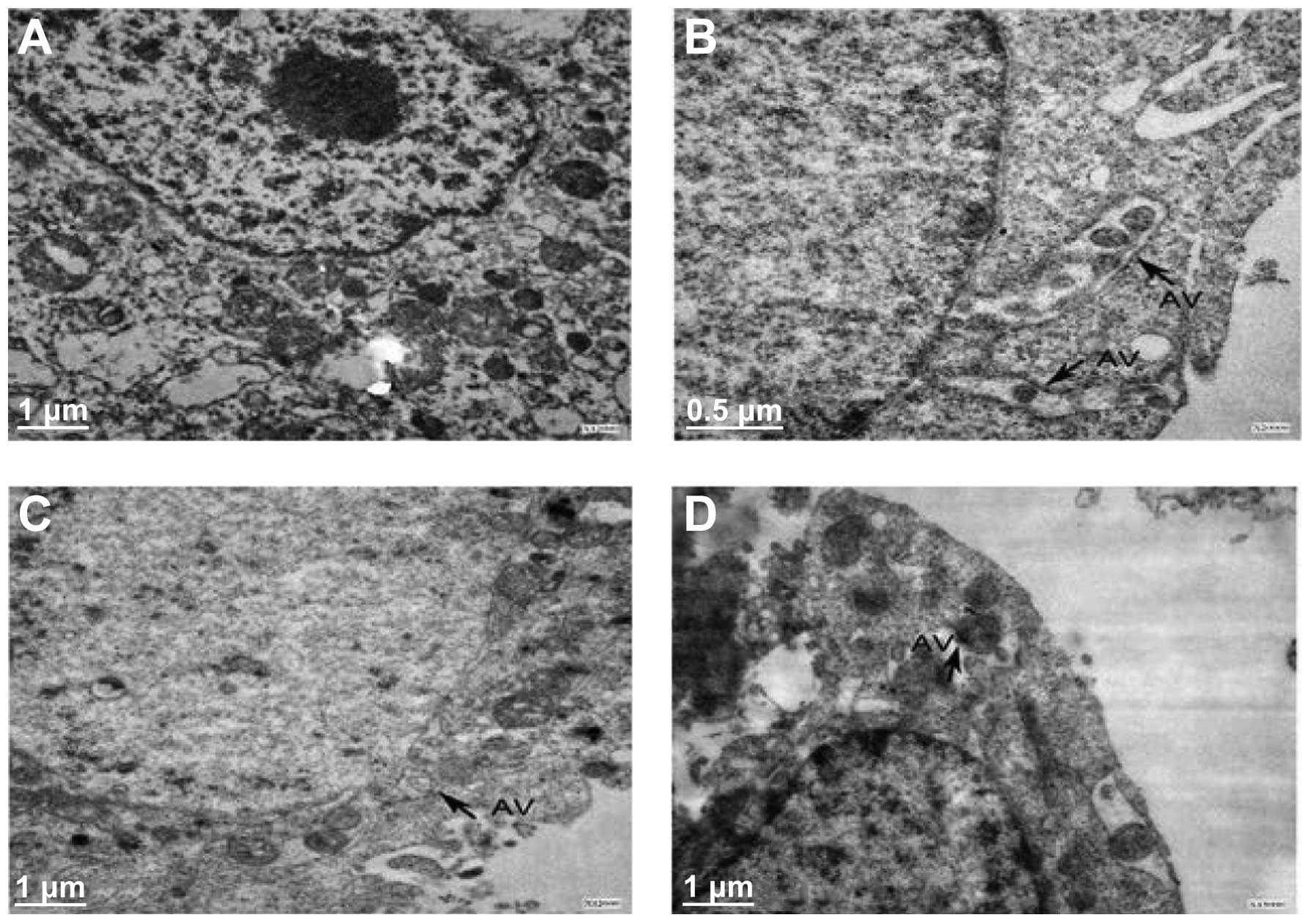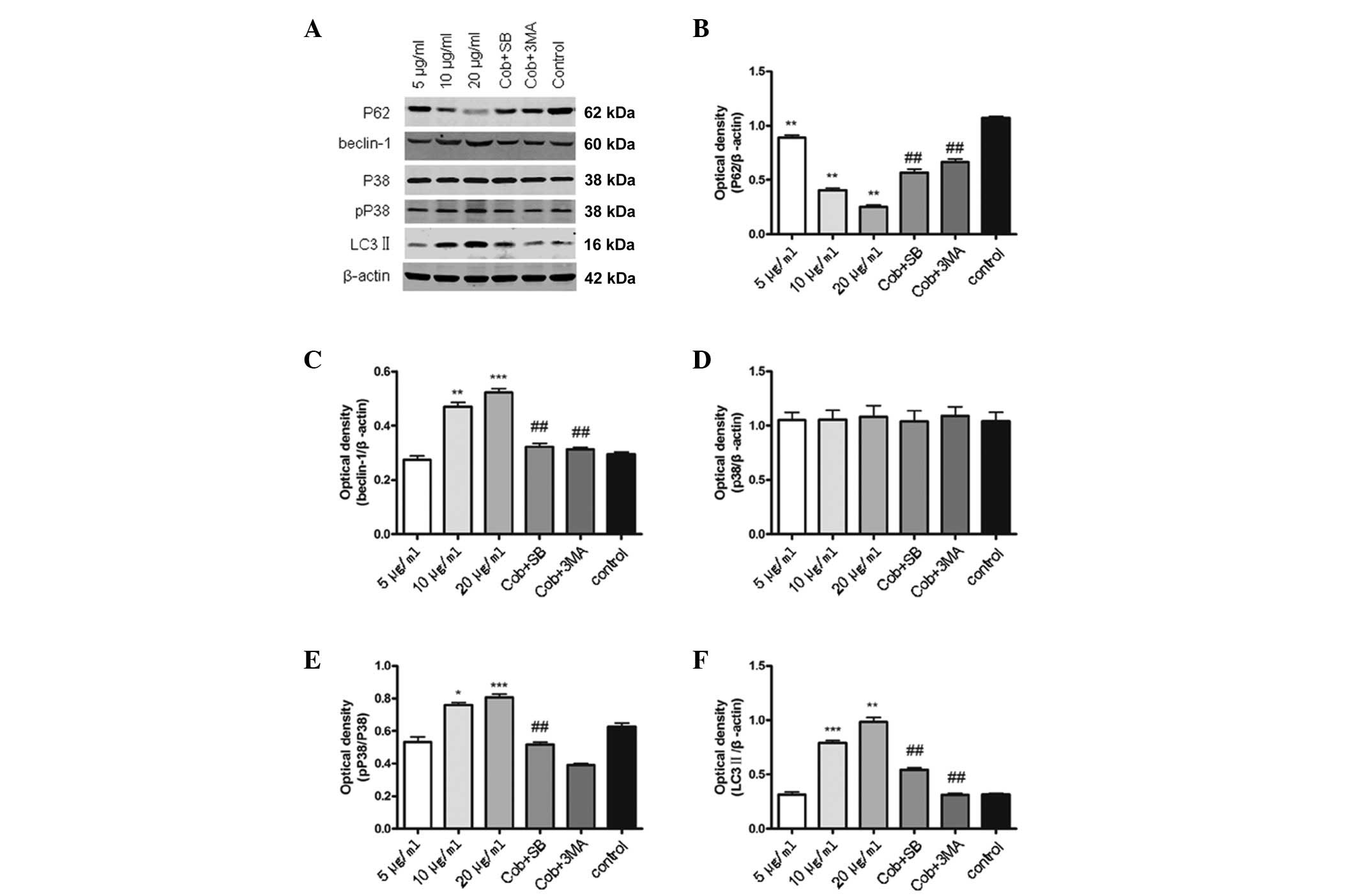Article
Open Access
Antitumor activity of cobrotoxin in human lung adenocarcinoma A549 cells and following transplantation in nude mice
- Authors:
- Jian Shen
- Yan Xie
- Mei‑Lin Sun
- Rong Han
- Zheng‑Hong Qin
- Jing‑Kang He
-
View Affiliations / Copyright
Affiliations:
Department of Cardiothoracic Surgery, The First Affiliated Hospital of Soochow University, Suzhou, Jiangsu 215006, P.R. China, Department of Pharmacology and Laboratory of Aging and Nervous Diseases, School of Pharmaceutical Science, Soochow University, Suzhou, Jiangsu 215123, P.R. China
-
Pages:
1961-1965
|
Published online on:
August 21, 2014
https://doi.org/10.3892/ol.2014.2467
- Expand metrics +
Metrics:
Total
Views: 0
(Spandidos Publications: | PMC Statistics:
)
Metrics:
Total PDF Downloads: 0
(Spandidos Publications: | PMC Statistics:
)
This article is mentioned in:
Abstract
The aim of the present study was to investigate cobra neurotoxin (cobrotoxin) activity in A549 cell lines transplanted into nude mice, and to explore its molecular mechanism. The 3‑(4,5‑dimethylthiazol‑2‑yl)‑2,5‑diphenyltetrazolium bromide (MTT) method was used to detect the growth inhibition rate of cobrotoxin in human lung A549 adenocarcinoma cells and HFL1 lung fibroblasts. Cell colony formation assays were performed to determine the effect of cobrotoxin on A549 cell colony formation, and transmission electron microscopy was used to detect cobrotoxin autophagy. In addition, western blot analysis was performed to determine the effect of 3‑methyl adenine (3‑MA) activity on the inhibition of autophagy, SB203580 inhibition of the p38‑mitogen‑activated protein kinase (MAPK) pathway, and Beclin 1, LC3, p62, p38 and phosphorylated (p)‑p38 protein expression. Nude mice were injected with human lung A549 cells, and intervention and control groups were compared with regard to tumor suppression. The MTT assay revealed that various concentrations of cobrotoxin inhibited growth of A549 cells, but not HFL1 cells. A549 cell colony formation decreased and autophagosome activity was significantly increased compared with the controls. Following 3‑MA administration, SB203580 autophagosome activity decreased, and following cobrotoxin administration, Beclin 1, p‑p38, and LC3‑II protein expression significantly increased, whereas p62 expression significantly decreased. Following 3‑MA inhibition of autophagy, Beclin 1, LC3‑II and p62 expression increased. Furthermore, following SB203580 inhibition of the p38‑MAPK pathway, Beclin 1, p‑p38, LC3‑II and p62 protein expression increased. Cobrotoxin exhibited inhibitory activity on the human lung cancer A549 cells transplanted into the nude mice, suppressing the tumor growth rate by 43.4% (cobrotoxin 40 µg/kg group). However, following the addition of 3‑MA (10 mmol/kg) and SB203580 (5 mg/kg), the suppression of the tumor growth rate decreased significantly. Cobrotoxin inhibits the growth of human lung cancer A549 cells in vitro and A549 cells transplanted into nude mice. Furthermore, the induction of autophagy may be associated with the activation of the p38‑MAPK pathway.
View References
|
1
|
US Cancer Statistics Working Group. United
States cancer statistics: 1999–2010 incidence and mortality
web-based report. http://198.246.124.29/cancer/npcr/pdf/USCS_FactSheet.pdf.
Accessed February 23, 2013
|
|
2
|
Kim MH, Shim HS, Kang DR, et al: Clinical
and prognostic implications of ALK and ROS1 rearrangements in
never-smokers with surgically resected lung adenocarcinoma. Lung
Cancer. 83:389–395. 2014.
|
|
3
|
Wu C, Jiang J, Shi L and Xu N: Prospective
study of chemotherapy in combination with cytokine-induced killer
cells in patients suffering from advanced non-small cell lung
cancer. Anticancer Res. 28:3997–4002. 2008.
|
|
4
|
Chen RZ and Robinson SE: The effect of
cholinergic manipulations on the analgesic response to cobrotoxin
in mice. Life Sci. 47:1949–1954. 1990.
|
|
5
|
Giozio A, Paleari L, Catassi A, et al:
Natural agents targeting the alpha7-nicotinic-receptor in NSCLC: a
promising prospective in anti-cancer drug development. Int J
Cancer. 122:1911–1915. 2008.
|
|
6
|
Alama A, Bruzzo C, Cavalieri Z, et al:
Inhibition of the nicotinic acetylcholine receptors by cobra venom
α-neurotoxins: is there a perspective in lung cancer treatment?
PLoS One. 6:e206952011.
|
|
7
|
Tang D, Kang R, Livesey KM, et al:
Endogenous HMGBl regulates autophagy. J Cell Biol. 190:881–892.
2010.
|
|
8
|
Gewirtz DA: Autophagy as a mechanism of
radiation sensitization in breast tumor cells. Autophagy.
3:249–250. 2007.
|
|
9
|
Lambert LA, Qiao N, Hunt KK, et al:
Autophagy: a novel mechanism of synergistic cytotoxicity between
doxorubicin and roscovitine in a sarcoma model. Cancer Res.
68:7966–7974. 2008.
|
|
10
|
Mizushima N and Yoshimori T: How to
interpret LC3 immunoblotting. Autophagy. 3:542–545. 2007.
|
|
11
|
Cao Y and Klionsky DJ: Physiologic
functions of Atg6/Beclin 1: a unique autophagy-related protein.
Cell Res. 17:839–849. 2007.
|
|
12
|
Sridhar S, Botbol Y, Macian F and Cuervo
AM: Autophagy and disease: always two sides to a problem. J Pathol.
226:255–273. 2012.
|
|
13
|
White E, Karp C, Strohecker AM, et al:
Role of autophagy in suppression of inflammation and cancer. Curr
Opin Cell Biol. 22:212–217. 2010.
|
|
14
|
Wu JG, Tang H, Liu ZJ, et al:
Angiotensin-(1–7) inhibits vascular remodelling in rat jugular vein
grafts via reduced ERK1/2 and p38 MAPK activity. Int J Med Res.
39:2158–2168. 2011.
|
|
15
|
Liu Z, Xu X, Chen L, et al: Helicobacter
pylori CagA inhibits the expression of Runx3 via Src/MEK/ERK and
p38 MAPK pathways in gastric epithelial cell. J Cell Biochem.
113:1080–1086
|
|
16
|
del Barco Barrantes I and Nebreda AR:
Roles of p38 MAPKs invasion and metastasis. Biochem Soc Trans.
40:79–84
|
















